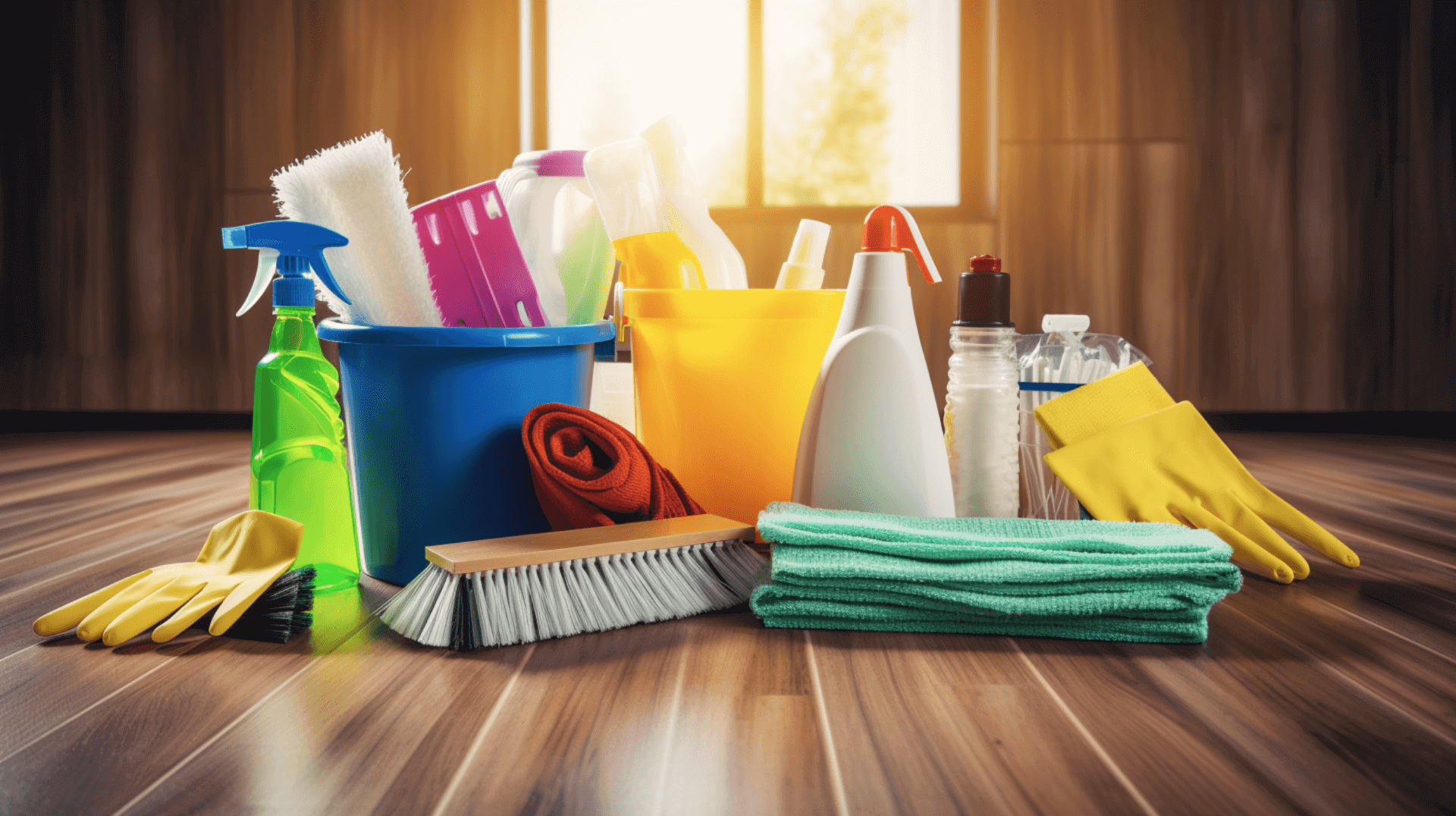Understanding the Importance of Protecting Wooden Floors from Dirt and Dust
Wooden floors are a valuable investment for both home and business owners, providing a beautiful and durable flooring option. they require proper maintenance and protection to ensure their longevity and appearance. Protecting wooden floors from dirt and dust is crucial for several reasons.
Dirt and dust can cause significant damage to wooden floors if not properly managed. these particles can act as abrasives, scratching and wearing down the surface of the wood. over time, this can lead to a dull and unattractive appearance, diminishing the overall aesthetic appeal of the space.
Furthermore, dirt and dust can accumulate in the cracks and crevices of the floor, causing discoloration and staining. This can be particularly challenging to remove and may require professional intervention. Additionally, the accumulation of dirt and dust can weaken the structural integrity of the floor, potentially leading to warping and other forms of damage.
Regular maintenance is essential for protecting wooden floors from dirt and dust. Vacuuming and sweeping the floor on a regular basis can help remove loose particles before they have a chance to accumulate. Using a damp mop or cloth to wipe down the floor can also help eliminate any remaining dirt and dust. Additionally, applying a protective sealant to the floor can provide an extra layer of defense against dirt, dust, scratches, and abrasions.
By understanding the importance of protecting wooden floors from dirt and dust, home and business owners can ensure that their floors remain in optimal condition, maintaining their beauty and durability for years to come.
Identifying the Types of Wooden Floors and Their Unique Needs

When it comes to wooden floors, there are a variety of types available, each with its own unique needs and considerations. Solid hardwood floors are made from a single piece of wood, while engineered wood floors are made from multiple layers of wood. Laminate floors are made from a composite material, while parquet floors are made from small pieces of wood arranged in a geometric pattern.
The type of wood used in a wooden floor can have a significant impact on its protection and maintenance needs. Hardwoods, such as oak and maple, are more durable and require less maintenance than softer woods, such as pine and cedar. Additionally, some woods are more prone to staining and discoloration than others, so it is important to consider the type of wood when selecting a flooring option.
For solid hardwood floors, regular sanding and refinishing are necessary to maintain their appearance and structural integrity. Engineered wood floors are more resistant to moisture and temperature changes, but may still require occasional repairs or replacements. Laminate floors are easy to clean and maintain, but they may need to be replaced more frequently compared to other types of wood floors. Parquet floors require regular cleaning and waxing to prevent dirt and dust from accumulating in the cracks between the pieces.
Understanding the specific considerations for each type of wooden floor is crucial for homeowners and business owners to properly protect and maintain their floors.
The Role of the Environment in Wooden Floor Protection
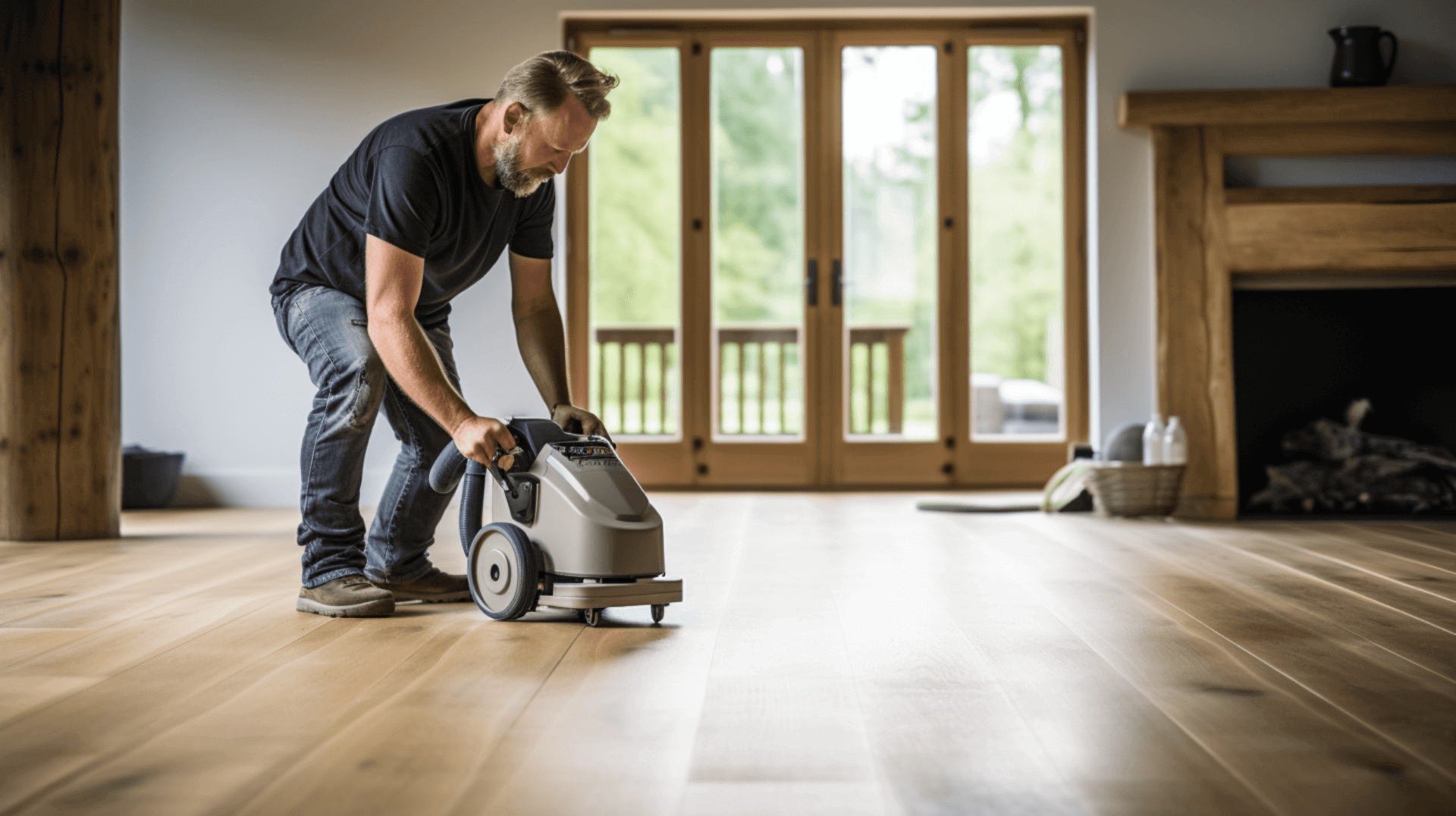
The environment can have a significant impact on the accumulation of dirt and dust on wooden floors. Temperature and humidity fluctuations can cause the wood to expand and contract, creating cracks and crevices that can trap dirt and dust. Additionally, high levels of humidity can cause the wood to swell, leading to warping and other forms of damage.
To minimize the environmental factors contributing to dirt and dust, it is important to maintain a consistent temperature and humidity level in the space. This can be achieved by using a dehumidifier or air conditioner to regulate the humidity and temperature levels. Additionally, it is important to ensure that the HVAC system is functioning properly and that the air filters are regularly changed.
The use of mats and rugs can also help protect wooden floors from dirt and dust. Placing mats and rugs at the entrances of the home or business can help trap dirt and dust before it has a chance to spread throughout the space. Mats and rugs can also provide an extra layer of protection against scratches and abrasions caused by shoes and furniture.
Regular cleaning and maintenance are essential for minimizing the impact of environmental factors on wooden floors. Vacuuming and sweeping the floors on a regular basis can help remove loose particles, while using a damp mop or cloth can eliminate any remaining dirt and dust. By implementing these practices and maintaining a suitable environment, home and business owners can effectively protect their wooden floors from dirt and dust, ensuring their longevity and appearance.
Preparing Your Wooden Floor for Protection: The Essential Steps
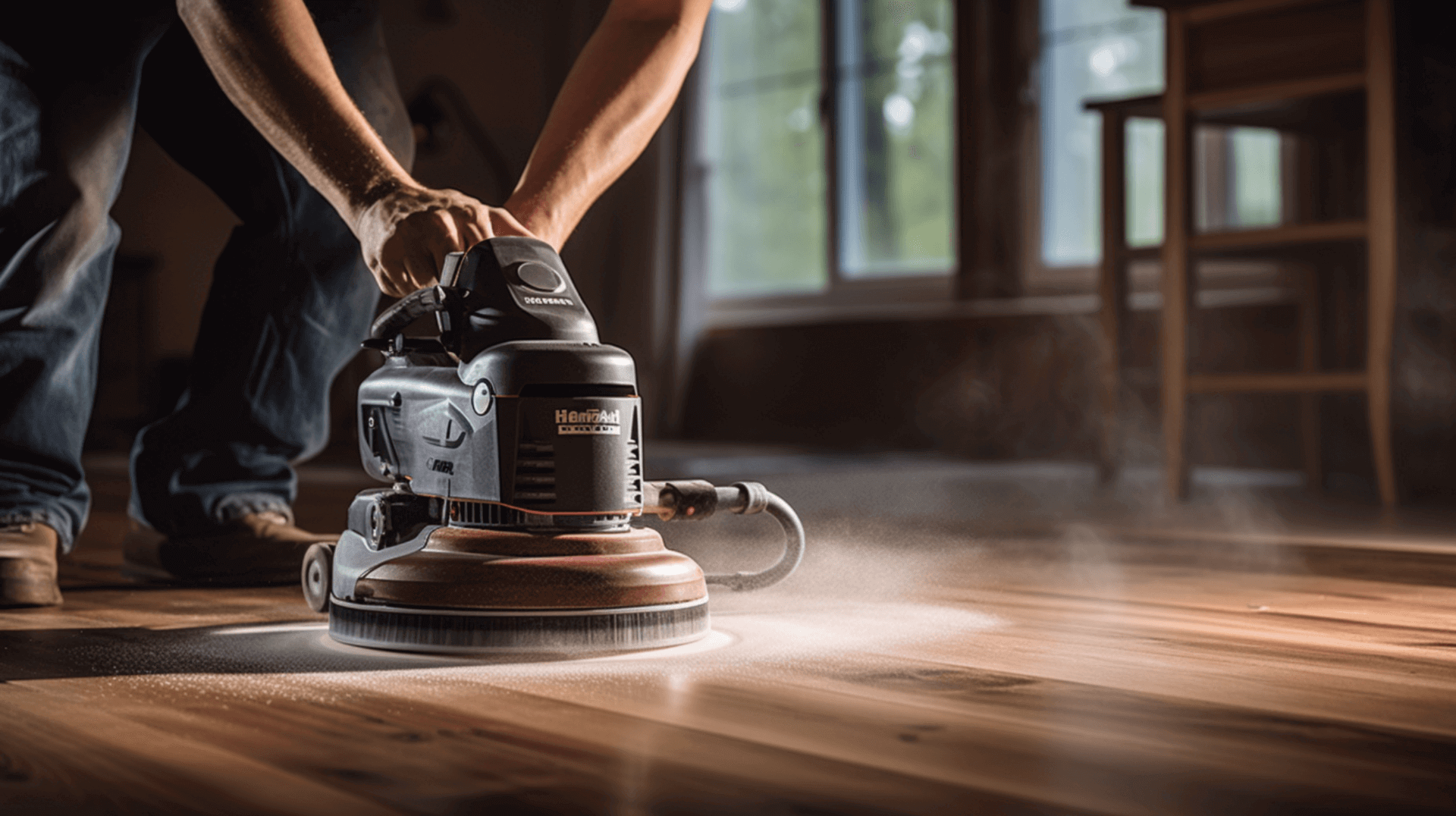
Preparing a wooden floor for protection is an essential step in ensuring its longevity and appearance. The necessary steps for this process include cleaning, sanding, and sealing. Additionally, it is important to have the right materials and tools on hand to ensure the job is done properly.
The first step in preparing a wooden floor for protection is to thoroughly clean the surface. This can be done using a vacuum or broom to remove any loose dirt and dust. Additionally, a damp mop or cloth can be used to remove any remaining dirt and dust.
Once the floor is clean, it is important to sand the surface to remove any scratches or imperfections. This can be done using a sanding machine or sandpaper. It is important to use the correct grit of sandpaper for the type of wood being used.
Finally, the floor should be sealed to protect it from dirt and dust. This can be done using a sealant or protective coating. It is important to use a sealant that is specifically designed for the type of wood being used. Applying a sealant helps to create a barrier that prevents dirt, dust, moisture, and other potential damages from penetrating the wood.
By following these steps and using the correct materials and tools, home and business owners can effectively prepare their wooden floors for protection, ensuring their longevity and maintaining their appearance.
The Art of Cleaning: Best Practices for Wooden Floors
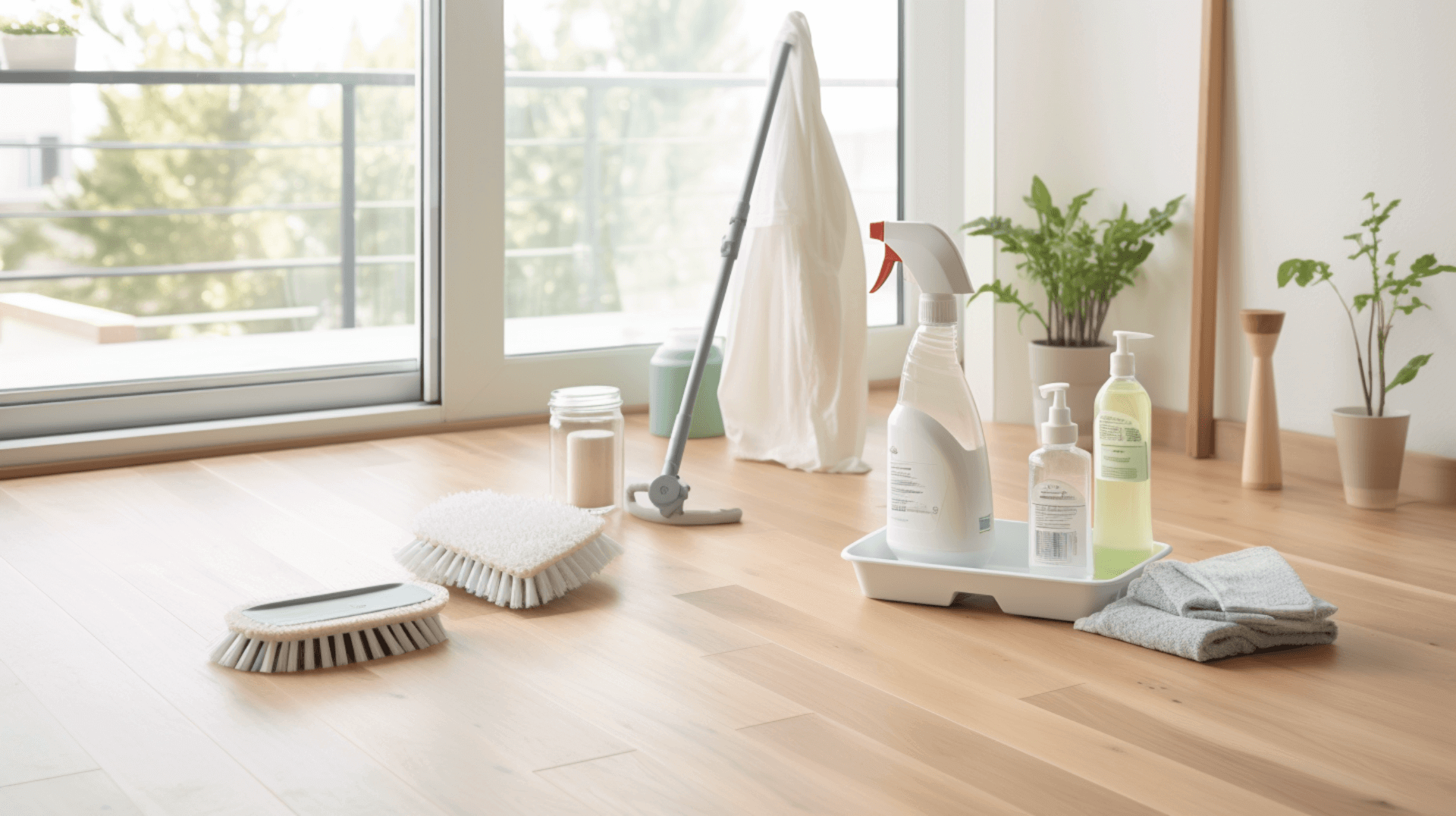
When it comes to cleaning wooden floors, it is important to use the right products, techniques, and frequency to ensure the longevity and appearance of the floor. The recommended cleaning products for wooden floors are those that are specifically designed for wooden floors, as these are typically mild and free of harsh chemicals that can damage the wood. Additionally, it is important to avoid using products that contain wax, oil, or silicone, as these can leave a residue on the floor.
When it comes to cleaning techniques, it is important to use a damp mop or cloth to remove dirt and dust. It is also important to avoid using excessive water, as this can cause the wood to swell and warp. Additionally, it is important to avoid using abrasive materials, such as steel wool, as this can cause scratches and damage the wood.
Before beginning any cleaning process, it is important to inspect the floor for any pre-existing problems or defects and report them on the check sheet. It is also crucial to fully inform the customer about the work being carried out, including any areas that may not be accessible due to lifted floorboards. Safety considerations should be taken into account, such as appropriately cordoning or barriering any openings or hazards.
By following these best practices and considering the additional safety measures, home and business owners can effectively clean and protect their wooden floors, ensuring their longevity and maintaining their appearance.
Sealing Your Wooden Floor: An Essential Protection Step
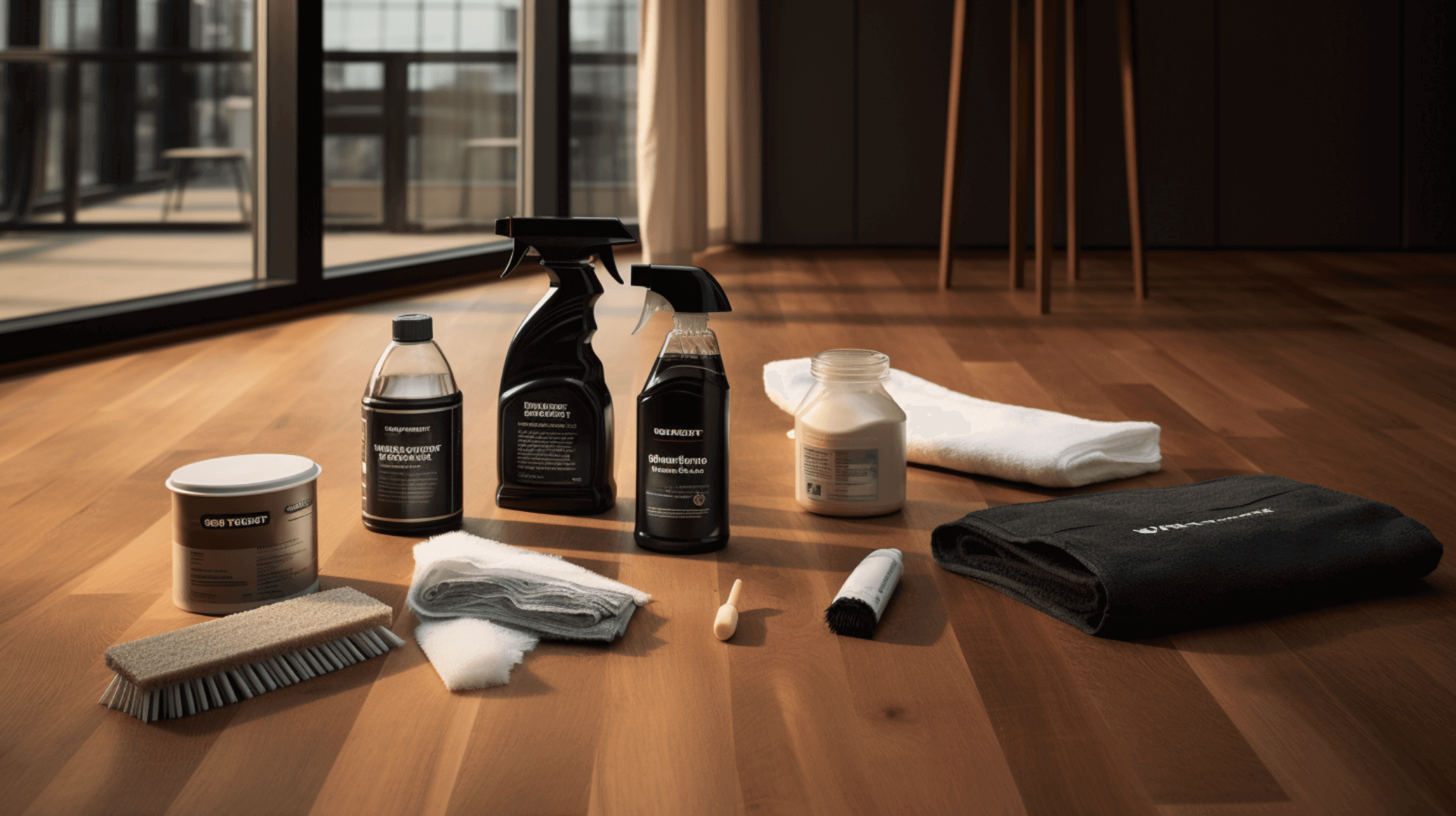
Sealing a wooden floor is an essential step in protecting it from dirt, dust, and other potential damages. It creates a barrier that prevents these elements from penetrating the wood and helps to protect the floor from scratches and abrasions caused by shoes and furniture.
When selecting a sealant, it is crucial to choose one specifically designed for the type of wood being used. It is important to avoid products that contain wax, oil, or silicone, as they can leave a residue on the floor.
The steps involved in sealing a wooden floor include cleaning, sanding, and sealing. Thoroughly clean the surface using a vacuum or broom to remove loose dirt and dust. Additionally, a damp mop or cloth can be used to eliminate any remaining dirt and dust. Once the floor is clean, sand the surface to remove scratches or imperfections, using the appropriate grit of sandpaper for the wood type.
Finally, apply the sealant according to the manufacturer’s instructions, ensuring even coverage. Allow the sealant to dry completely before allowing foot traffic on the floor.
By following these steps and using the correct sealant, home and business owners can effectively protect their wooden floors, prolonging their lifespan and maintaining their appearance.
The Role of Sanding in Wooden Floor Protection
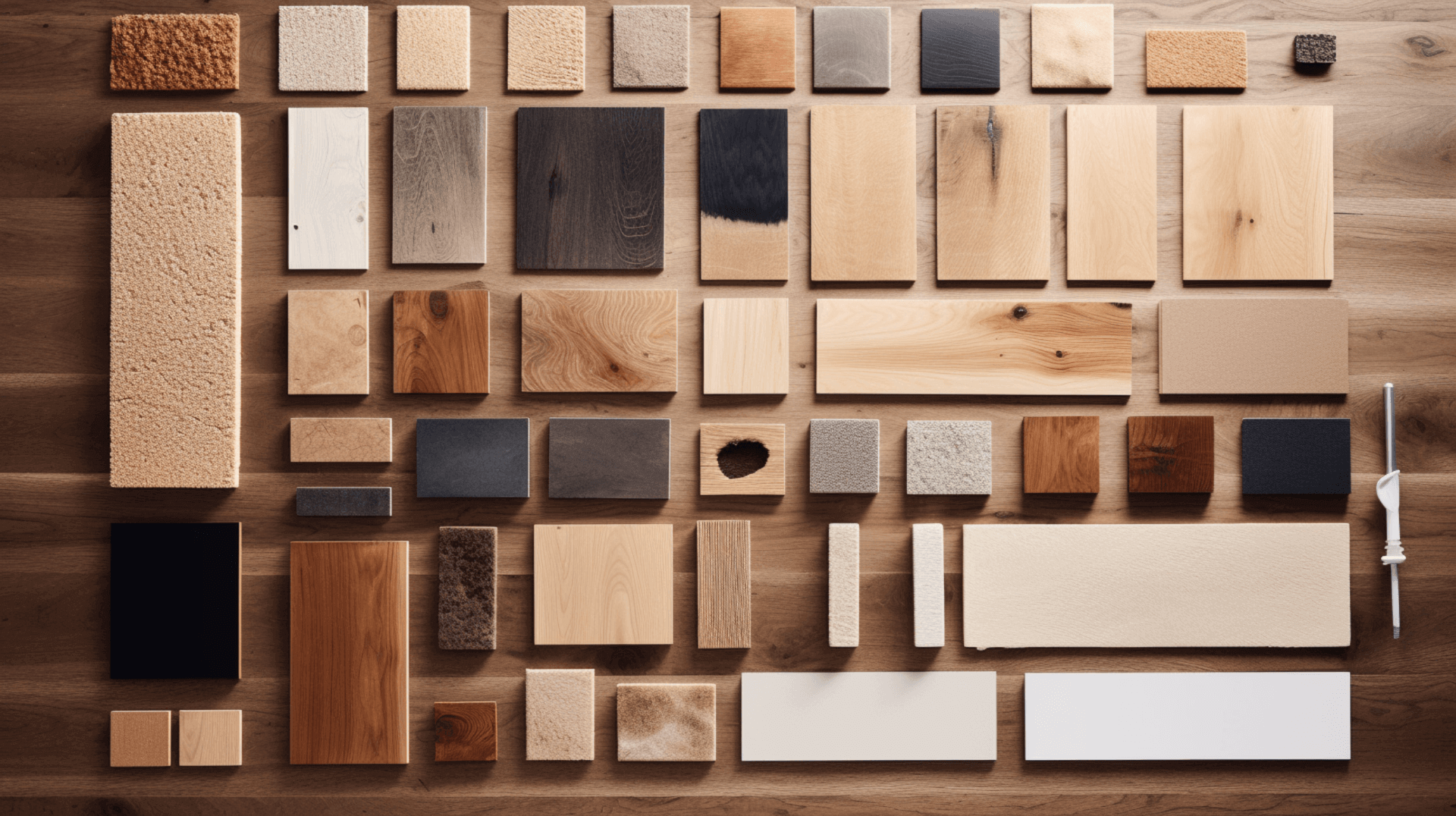
Sanding is an essential step in protecting wooden floors from dirt, dust, and other potential damages. It helps to remove scratches and imperfections, creating a smooth surface that is easier to clean and maintain. It is important to use the appropriate grit of sandpaper for the type of wood being used and to avoid using excessive pressure, as this can cause the wood to become damaged. Additionally, using a vacuum or broom to remove any dust and debris created during the sanding process is recommended.
To improve the thermal performance of a suspended timber floor by adding extra insulation, it is important to comply with the current relevant national building regulations. In England, Wales, and Northern Ireland, the floor should achieve a thermal transmittance (U-value) of at least 0.25 W/m2K. In Scotland, the floor should achieve a thermal transmittance (U-value) of at least 0.18 W/m2K. It is recommended to refer to the manufacturer’s guidance for achieving this level of performance, as it may vary depending on the floor type, shape, and size.
By following these guidelines and considering the specific requirements for sanding and thermal insulation, home and business owners can effectively protect their wooden floors and improve their overall performance.
Choosing the Right Wooden Floor Protection Products
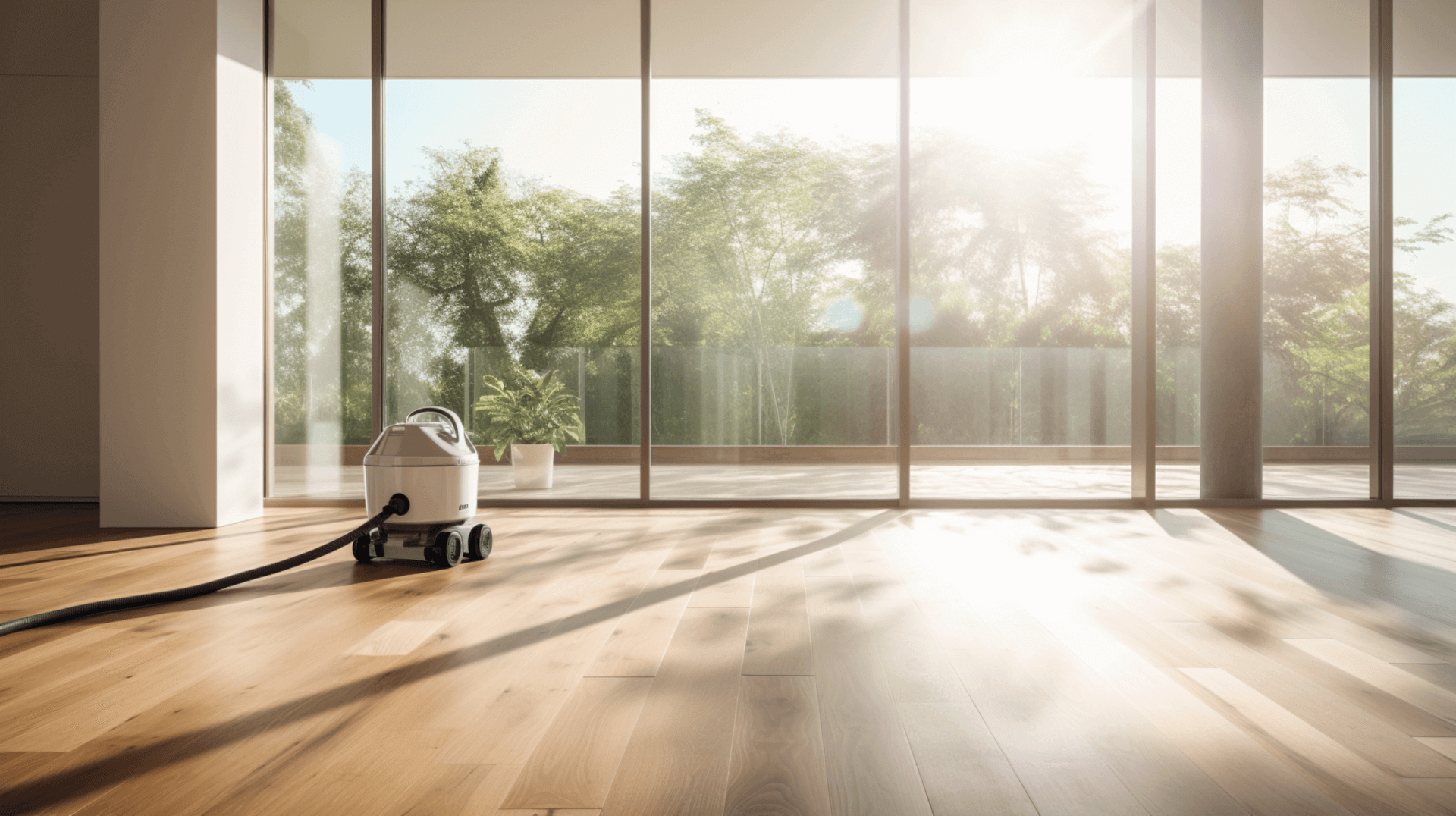
When it comes to protecting wooden floors, there are a variety of products available to choose from, including sealants, waxes, oils, and finishes. It is important to choose the right product based on the type of wood being used and the desired level of protection. For example, hardwood floors may require a more durable product than softwood floors. It is also important to consider any guidelines or recommendations provided by organizations such as the National Wood Flooring Association.
When applying these products, it is crucial to follow the manufacturer’s instructions and use the appropriate tools and techniques. Before applying the product, ensure that the surface is clean and free of dust and debris. Allow the product to dry completely before allowing foot traffic on the floor. Additionally, consider any safety considerations recommended by the manufacturer, such as cordoning or barriering any openings or hazards.
To improve the thermal performance of a suspended timber floor by adding extra insulation, it is important to comply with the current relevant national building regulations. In England, Wales, and Northern Ireland, the floor should achieve a thermal transmittance (U-value) of at least 0.25 W/m2K. It is recommended to refer to the manufacturer’s guidance for achieving this level of performance, as it may vary depending on the floor type, shape, and size.
By choosing the right wooden floor protection product and applying it correctly, home and business owners can effectively protect their floors and maintain their appearance for years to come.
Maintaining Your Wooden Floor Protection: A Continuous Process
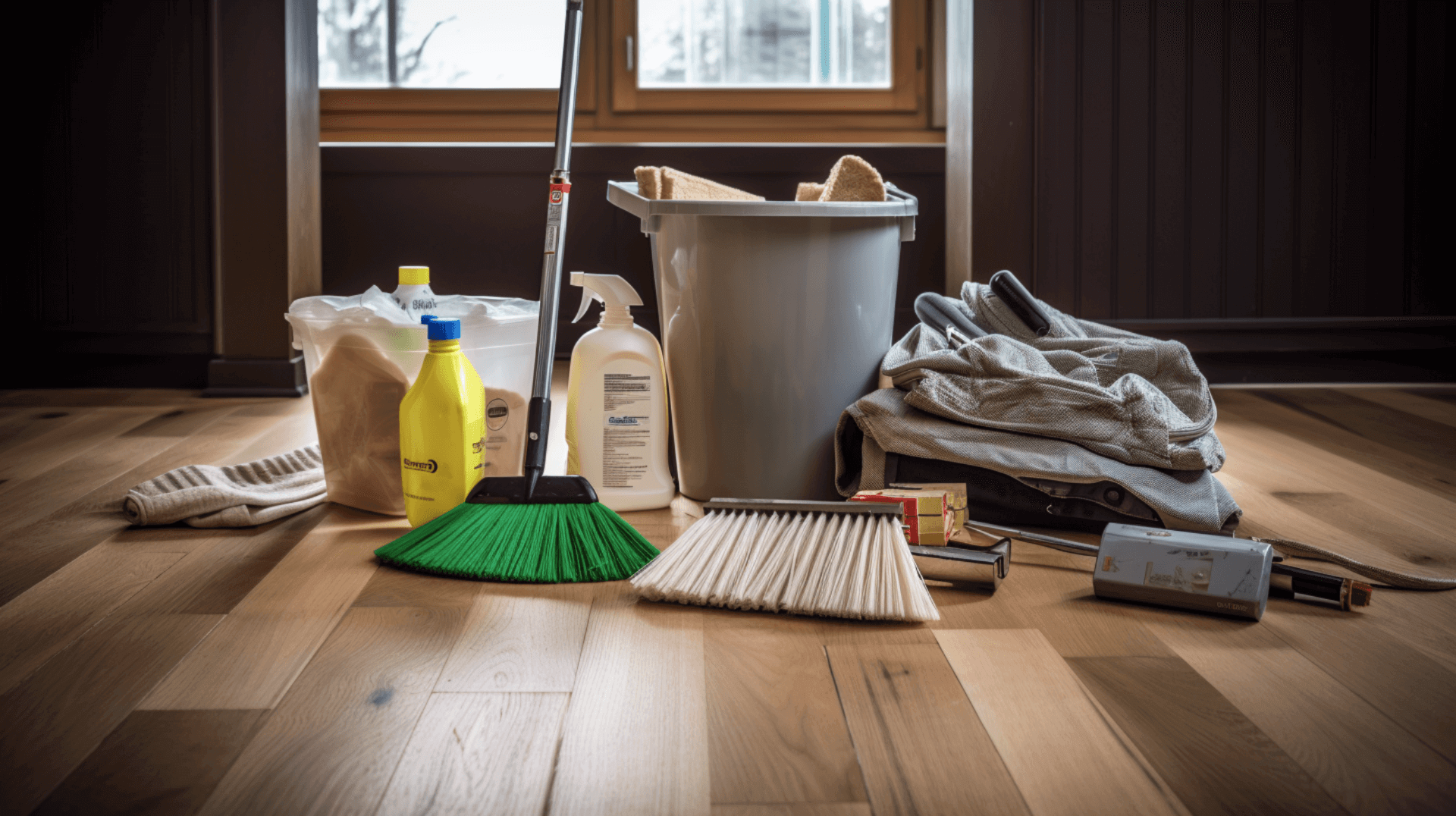
Maintaining the protection of wooden floors is a continuous process that requires regular cleaning and maintenance. It is important to vacuum or sweep the floor regularly to remove dirt and dust, and to use a damp mop or cloth to eliminate any remaining dirt and dust. Additionally, it is important to check the floor for any signs of wear and tear, such as scratches or abrasions, and to repair any damage as soon as possible.
It is also important to periodically check the floor for any signs that the protection needs to be reapplied. These signs may include discoloration, fading, or a dull appearance. If any of these signs are present, it is recommended to reapply the protection product according to the manufacturer’s instructions. Additionally, it is important to verify that the address for installation is correct, and the technician identifies their credentials to the customer. The customer should also be fully informed of the work being carried out, including an explanation of any areas that are not accessible (these may be whole rooms if floorboards are lifted). Additionally, any openings or hazards should be appropriately cordoned/barriered.
By following these maintenance steps and regularly checking the condition of your wooden floor, you can ensure that it remains protected and maintains its beauty for years to come.
Troubleshooting Common Wooden Floor Protection Issues
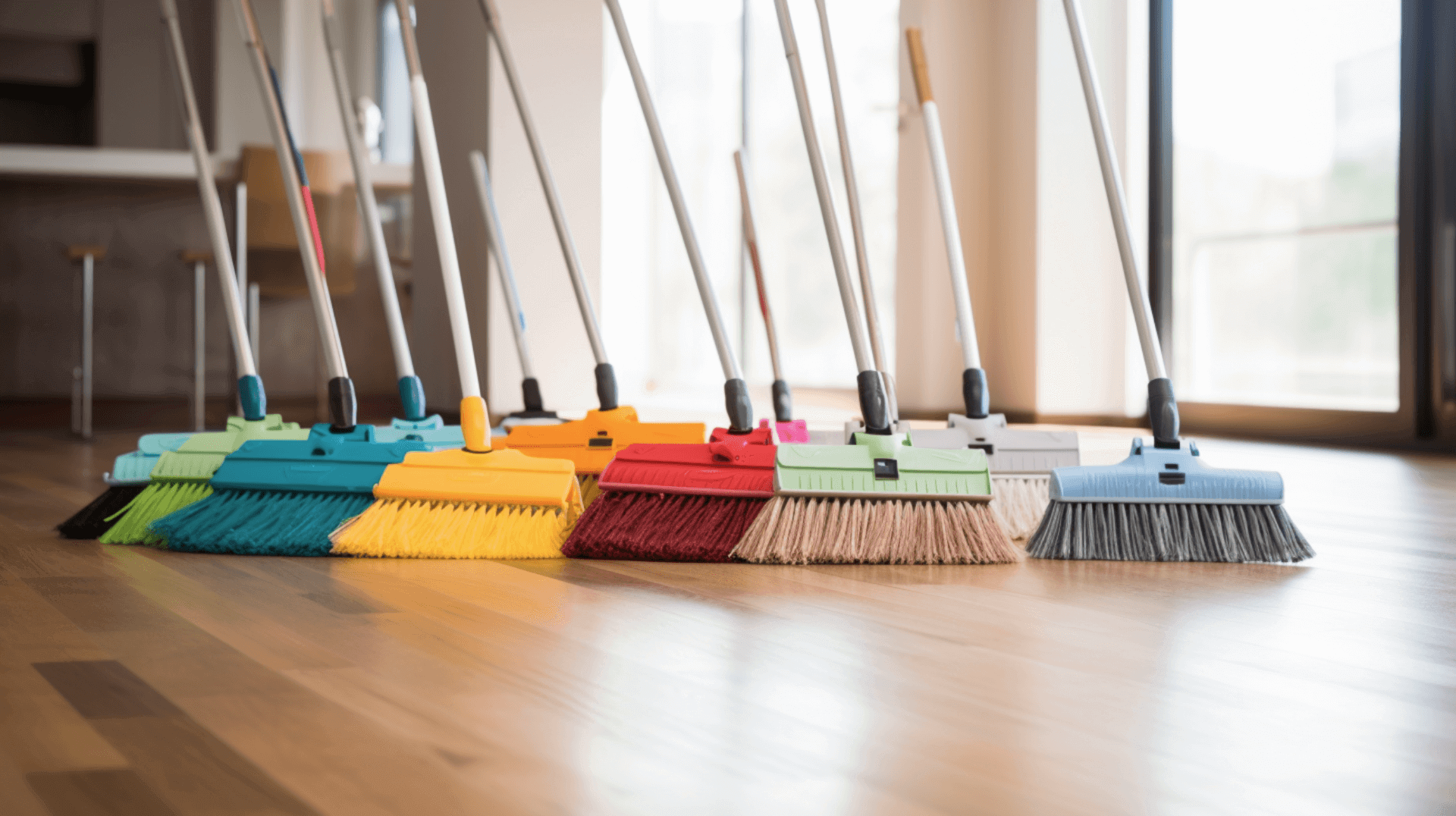
When it comes to wooden floor protection, there are a variety of common issues that can arise, including discoloration, fading, scratches, and abrasions. To address these issues effectively, it is important to follow the manufacturer’s instructions and use the appropriate tools and techniques.
For discoloration and fading, reapplying the protection product according to the manufacturer’s instructions can help restore the floor’s original color and protect it from further damage. To address scratches and abrasions, using a fine-grit sandpaper to remove the damage and then reapplying the protection product is recommended.
In addition to these steps, it is important to consider the moisture content of the timber joists. Ensuring that the moisture content does not exceed 20% is crucial, as timbers are generally understood to be free from the risk of decay below this moisture content. It is also important to check for the presence of water or condensate pipes in the sub-floor void when installing or designing the floor. These pipes can have an increased risk of freezing if the floor is insulated and the pipes are left exposed to the colder void environment.
While addressing these issues, it is recommended to use a vacuum or broom to remove any dust and debris created during the sanding process. Regular visual inspections of the floor voids should also be conducted to check for the presence of water or condensate pipes.
By following these maintenance steps and considering the additional context provided, home and business owners can effectively troubleshoot common wooden floor protection issues and ensure that their floors remain protected and maintain their beauty for years to come.
Expert Advice: Insights from GJP Floor Sanding Professionals

GJP Floor Sanding professionals offer a range of expert tips for protecting wooden floors. We recommend regularly vacuuming or sweeping the floor to remove dirt and dust, and using a damp mop or cloth to eliminate any remaining dirt and dust. Additionally, we suggest checking the floor for any signs of wear and tear, such as scratches or abrasions, and repairing any damage as soon as possible. It is also important to consider the moisture content of the timber joists, ensuring that it does not exceed 20%, and to check for the presence of water or condensate pipes in the sub-floor void when installing or designing the floor.
Professional services provided by GJP Floor Sanding can further enhance the protection of wooden floors. We offer a comprehensive range of services, including sanding, sealing, and staining. These services are carried out by experienced professionals who have the expertise to ensure that the wooden floors are properly protected and maintained. GJP Floor Sanding also provides a pre-installation check sheet to identify any pre-existing problems or defects, which are then reported to the customer before starting the work. In the event that any damage is caused during the process, no matter how small, the customer is promptly informed and the matter is reported to the relevant organization responsible for the work. This ensures that any issues are addressed appropriately and quickly, providing peace of mind to the customer.
With our range of services and attention to detail, GJP Floor Sanding is dedicated to delivering high-quality results and ensuring the long-term protection and beauty of wooden floors.
Contact Us: Get Professional Help from GJP Floor Sanding
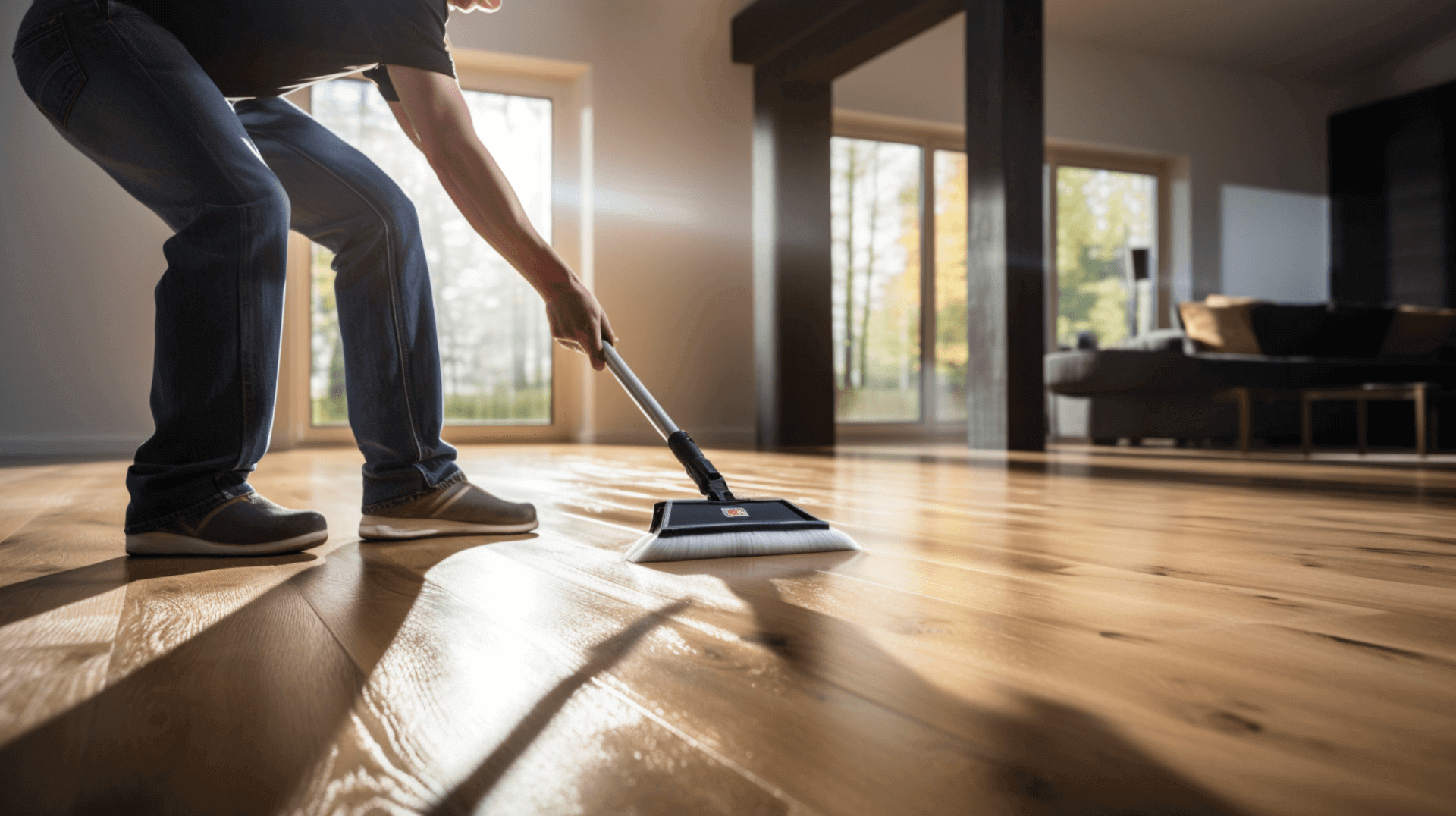
GJP Floor Sanding is dedicated to providing customers with the highest quality of service and ensuring that our wooden floors are properly protected and maintained. We offer a comprehensive range of services, including sanding, sealing, and staining, all of which are carried out by experienced professionals who have the expertise to ensure that the wooden floors are properly protected and maintained.
In addition to our services, GJP Floor Sanding provides a pre-installation check sheet to identify any pre-existing problems or defects. This allows us to address any issues before starting the work, ensuring that the installation process goes smoothly. We also check for the presence of water or condensate pipes in the sub-floor void when installing or designing the floor, and ensure that the moisture content of the timber joists does not exceed 20%.
Furthermore, GJP Floor Sanding provides guidance on various aspects of wooden floor protection, including options for insulating a suspended timber floor, methods of applying roll or batt insulation, and insulating using spray foam. We also offer guidance on sub-floor ventilation, moisture control barriers, cold bridging, protected species, installation methods, and more. Our expertise extends to services and damp-proof courses, water pipes, gas pipes, electrical wiring, flues, underfloor heating, and condensation.
To get in touch with GJP Floor Sanding, customers can visit our website or call our customer service line. We also offer a free consultation service, where customers can discuss our specific requirements and receive personalized advice. With our attention to detail and expertise in wooden floor protection, GJP Floor Sanding is the perfect choice for all your needs.
